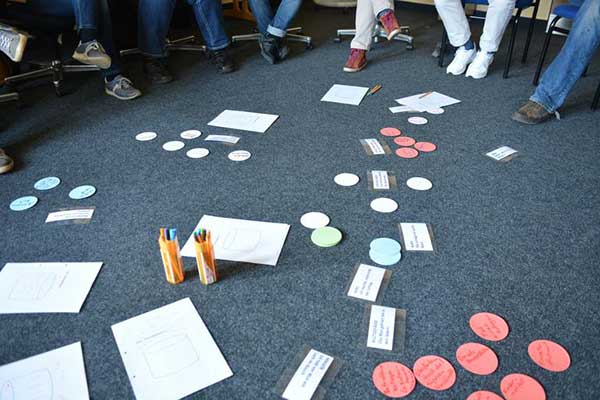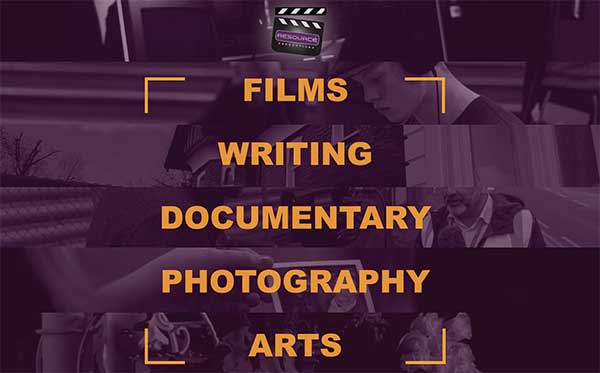Most industries have a skills gap somewhere, and the animation industry is no exception. Animation UK report “We need to talk about skills: A skills analysis of the UK Animation industry” (November 2018).
There are discussions and debates, and businesses opportunities to mend this gap. In the midst of all this one company in particular is offering a remarkable solution to the problem of the skills gap, and the diversity gap. I’m going to tell you how they are uniquely resolving these, but first let’s understand the problem.

New talent
There is an ongoing debate about how to get more young people into the industry from University and through other routes too. That’s not just a quirk of the animation industry either, most of the creative industries are developing schemes and perfecting degrees to find and develop new young talent to feed the growing creative sector.
Yet there is still a cry from the industry that these new young people are not ready to work, either because they don’t have a high enough level of skill, or because they are not mature enough to handle the stress and demands of a challenging profession.
But is this the only workforce ripe to burst into the scene?
Aren’t we missing something obvious here?
It seems that there is a hidden workforce, one with additional talents and skills, commitment, professional experience, and often with useful transferable skills. Domain-specific skills can be developed on a training course, but some of the general skills can take longer to develop. New talent isn’t just young talent.
Who is missing from the workforce that we are failing to assist into this creative sector?
People returning to work after a career break

There are many people who take a career break to have a family or to care for other family members. These are usually women, but men are now also choosing to be the main career in a family. The animation industry moves at a fast pace and people returning to this creative sector need retraining to get back in. After a career break many might change career too, so some will be trying to enter the creative sector (and animation sectors) for the first time.
This workforce is highly motivated as they have an urgency to make up for lost time, lost income and lost career development time. They often have highly developed organisational and people skills and are very committed to making up for lost time. They are in many ways an ideal workforce, in need of specialist skills and keen to learn them. Good.
However they often do not have much money to pay for training, they often still have childcare commitments and restrictions, and are often not in the most supportive environment. Not so good.
So what do they need to make inroads into the creative sector? Skills training, mentoring and help with childcare costs whilst training.
What can this workforce offer? A more balanced Media view point. Commitment, professionalism, highly motivated, a fresh perspective, and a more grounded working environment.
People from minorities

The media industry, and mass media in particular, has a profound effect on the views of the wider population.
As media professionals know so well, the subtleties of representation, or lack of, has a huge impact on the way the audience perceives something, or someone.
When people of ethnic minorities for example are less involved, or even not involved at all, in media production, they tend to be either not represented at all, or represented in a stereotypical or negative way. This then creates an environment where they are less inclined to work in media, nor encouraged to, thus representation continues to stagnate.
We are thus missing an entire perspective. Our media creations are missing a cultural perspective, lacking that vital energy that comes from diversity, challenging our values, testing our presumptions and injecting vibrant alternatives to endless repetition.
People changing career

Gone are the days of a job or career for life. These days we are expected to have changed career several times in our working life. Sometimes these career changes are drastically different, accountancy to storyboarding for example. Sometimes they are from one part of a sector to another. Rigging to animating, 2D to 3D, camera to compositing, for example. In some cases it is a change in response to skills shortages, in others it’s a progression towards a wider goal, and in yet others it’s a side step to something more interesting or suitable.
Career changers, whether extreme or subtle, bring enormous benefit with them, as they can have a more in depth understanding of another part of the pipeline or a completely different part of the industry in terms of transferable skills.
This workforce is usually seen as being in a better position to reskill themselves for. New role, and many will do so easily paying for one of the many private skills based training courses on offer. People transferring from another industry entirely may end up doing a second degree, to give themselves a better grounding. These people will need more help as they may have more accumulated debt, and no good contacts in this new field.
Doesn’t talent come first?

Is talent born or bred? Are people born with an innate talent to move an object around in computer generated space? Or to draw? Or even to write? I’m not sure if it’s possible to know, or measure this. Personally I think we have natural tendencies and interests that can help us in a career. We can also become fixated on, and have a passion for, a certain career, but that doesn’t make us great. Working on skills, experience, feedback and persistence makes us great.
So people can become great after a career change, after a career break or if they are underrepresented. But sometimes, in the private backrooms of boardrooms we can unfortunately still hear the distant echo of “but they are crap, that’s why they haven’t made it by now”.
Sometimes a man changing career, or a woman, or someone from an ethnic minority for example might not be that good – yet. The problem is that for every thousand men entering the industry in their youth, a percentage will become great at what they do. But if the numbers of older people, women and BME entrants are significantly lower, let’s say in the tens rather than thousands, then the same percentage that will become great is a significantly smaller number.
Doesn’t talent shine through regardless?
It will always be a percentage of any demographic who will reach the top of their game. So if only a small number of women (for example) enter the industry, an even smaller number will reach the top. Take a typical cohort of students training to be compositors for example. 19 will be men, 1 will be a women. That’s about 5% women, 95% men. Let’s say that 30% of the students will get jobs in compositing after they graduate. What’s the probability that one of those will be a women? Pretty low right.
If the numbers of women entering the industry equalled the number of men, there would be equal numbers at the top of the profession too.
Although there wouldn’t be.
It’s not that simple.
Women can have families. They may choose to take time off to enjoy this job too. Men might too. But at the moment, it’s mostly women. Women who continue to work may want more predictable hours, in response to childcare needs. Women can be less bold in their route up their career ladder, and be more easily overlooked. They can be less willing to take risks and try new things, preferring to get more training first, rather than jump in and wing it.
Older people changing careers, and BME talent may feel unwelcome or may be discriminated against. Freelancers are chosen on a ‘who you know’ basis, networks can be fairly closed affairs at times.
So is it all about talent?
Talent needs to be fostered, we need to reach out and get more variation in those entering the profession if we want more talent across the board. Talent grows out of a critical mass, so there needs to be a culture of older people changing career, women and BME engaged in the sector for larger numbers of top talent to appear.
Creativity thrives with diversity. So stifling diversity ultimately stifles the creativity of the creative sector.
So what’s the solution?

We have a skills gap.
We also have a diversity gap. We have a lot of mid-career people who need a bit of extra help to jump the gap, either into a new field, or returning after a break, or entering an industry that’s not very diverse.
We do have private training opportunities. These can be very good, however they can also be prohibitively expensive for many.
To take the risk of entering into expansive retraining, a person needs to be fairly confident that it will pay off. They need to believe that they can indeed do the job at the end and that it’s a career worth committing to. They may initially need encouragement, mentoring and help with finance. The student loan is a lot easier to deal with than a career development loan. Student loans can be deferred until you are earning over a certain threshold, not so the career development loan, resulting in far more pressure on older people returning to work or changing career. Unfortunately it seems we are only entitled to one student loan, even though it is estimated that most people now will change career several times in their life.
Who is offering a unique solution right now?

Domonique Unsworth of Resource Productions (https://www.resource-productions.co.uk/home) has developed a program to directly tackle this need, in a dynamic and practical way.
It’s called the Creative Collective training programme and it is supported by Screen Skills. What makes it unique is that it offers a one to one support package that looks at the unique needs and skills of each member on the programme, and develops a learning journey tailored to the individual, to get them from where they are to where they want to be in the industry. Its aimed at anyone who has made a start at moving into the film and animation industry and who needs additional support.
Learners are offered mentoring from professionals in the field they are breaking into, funding towards any specialist training they need to develop specific skills identified by their mentor, money towards childcare and travel, and accountability to hit the self-defined milestones.
This programme will start to fill the skills and diversity gaps identified in recent industry reports. But it’s only just started, and needs to be allowed to continue running and expanding to help more people.
Resource Productions has been committed to promoting diversity and providing opportunities for young people to get into the film and TV industry from its start, and now it is able to expand that support to older, mid-career people who need help to break through the barriers. It also runs a number of skills courses too, have a look and get in touch if this could help you too. https://www.resource-productions.co.uk/the-resources
Hope this information is helpful, please share it with anyone who may benefit from the Creative Collective training programme.
Thank you for your time, and leave a comment if you would like to add your views.
